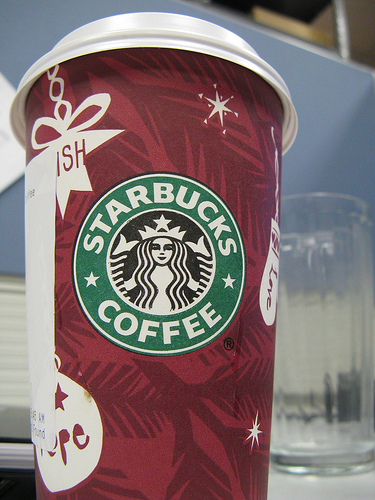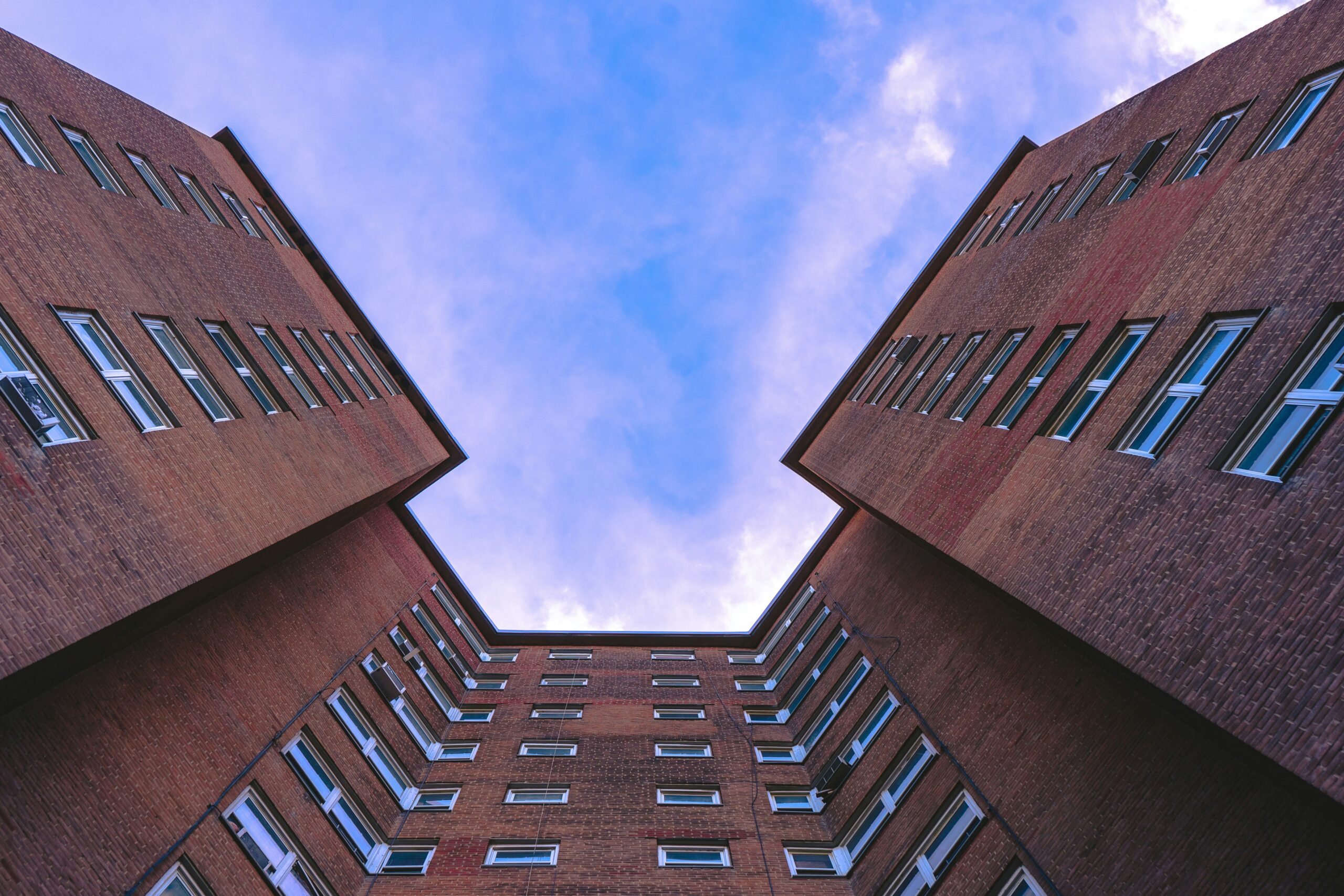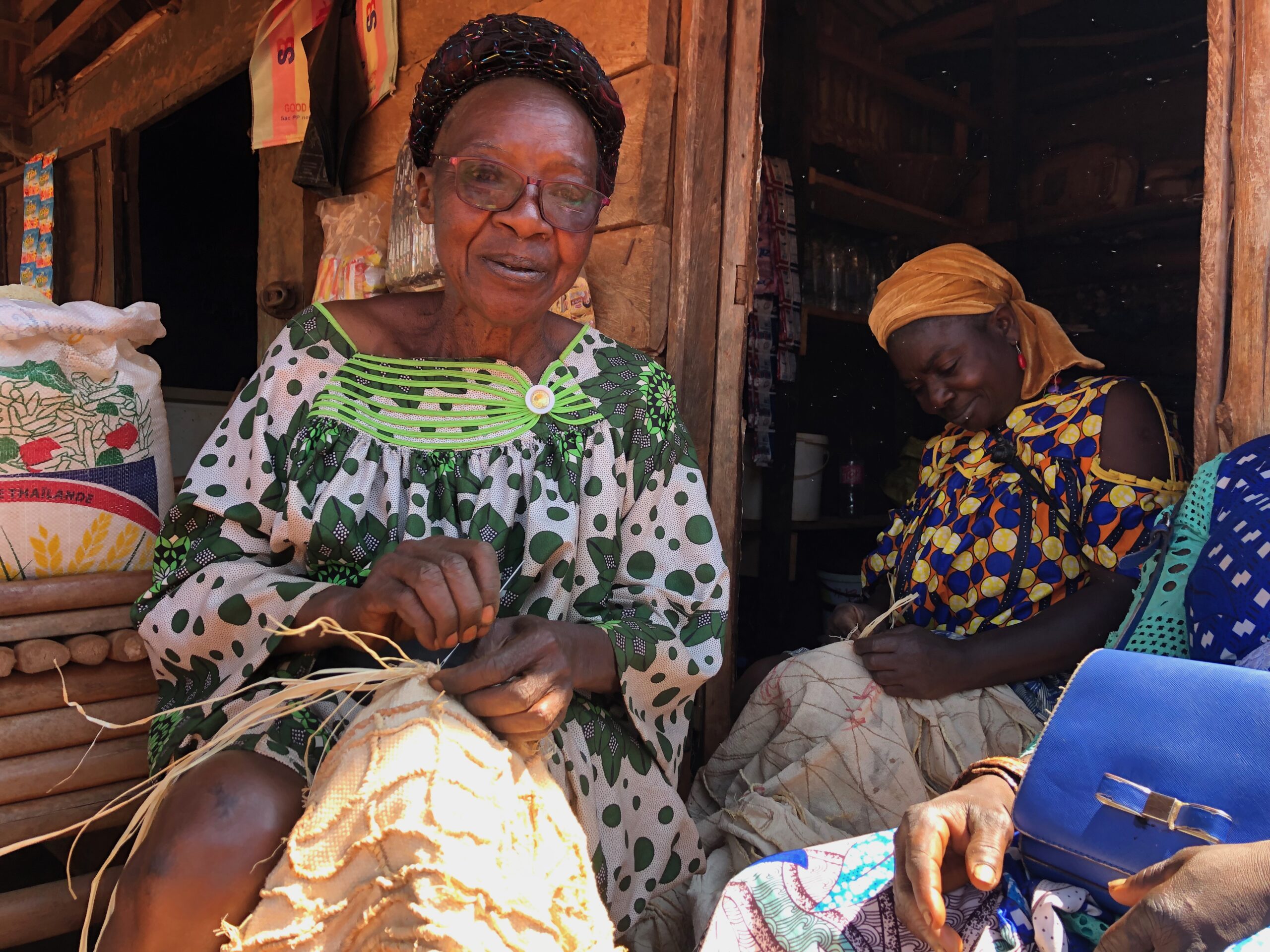
It is Red Cup season! Under halogen lights, red metal tumblers gleam and pinken plastic to-go mugs. Swirled teacups shine like candy canes. Behind the café counter, whipped-cream ski hills top the menu of seasonal drinks with a flurry of diamonds and snowflakes. In sizes tall, grande, and venti, towers of patterned coffee cups are plucked by red-aproned baristas, like ornaments off a tree.
November 1 began Red Cup season at Starbucks. Its advent signals the start of the holiday season in the sixty-six countries where the company has stores, including in Abu Dhabi, where it is eighty-six degrees and boulevards are lined with palm trees. At each of the city’s twenty-four Starbucks, gingerbread and toffee nut lattes promise to be “warm and cozy” and “topped with joy.”
In the United Arab Emirates, the desert landscape and the native Muslim population make Red Cup season seem artificial. But, as odd as it seems, this Christmas in paradise scene has a desert precedent. It can be traced to the era when the American Sunbelt tropics were newly glamorous, when spending the classic Christian holiday at a beachy resort was a kind of national perfection. In a photograph of Long Beach, California, circa 1920, three bathing-suited girls open presents on the sand with a scrawny pine tree propped up like a parasol behind them. Rockettes high-kick down a can-can line in red and green bikinis. A woman painted on a vintage travel poster sleeps on a chair in a red swimsuit, the sand in fadeout sunlight. The sign off: Merry Christmas from California.”
Like the holiday paradise created in early twentieth-century California, at Abu Dhabi’s multinational resorts—almost the only places that legally serve alcohol—the natural environment has been exquisitely refashioned into white beaches ripe with daiquiris—beaches separated from the noise and grime of city streets by merely a hotel lobby. New developments under construction on adjoining islands host Spanish-revival villas and pro-designed golf courses. On a green or on a beach, you could be in Palm Springs.
But as beautiful as a California-resort Christmas once appeared, contemporary versions of the old vacation posters have taken a turn for the grotesque; such places now feel consumed by their own excess, by twenty-four hour Christmas music. So here in Abu Dhabi, where we are surrounded by such enormous excess—indoor ski slopes, man-made islands, and organic tomatoes locally grown among sand dunes–Starbucks’ perma-snow in perma-paradise can look downright insidious.
And yet, history points to an ironic evolution of Christmas-in-paradise authenticity. Those pre-war vacation spots ultimately gave birth to the democratic access to resort leisure that are the suburbs, luxurious versions of which now constitute much of Abu Dhabi. That Starbucks, which became ubiquitous in American suburbs’ residential-commercial hybrid spaces, has been transplanted to Abu Dhabi should therefore come as no surprise. Improbably, in Abu Dhabi, Red Cup Season belongs.
2.
During the twenties and thirties, the Mojave and Colorado deserts were home to tuberculosis sanatoriums, which evolved into vacation inns and then began to sustain a small resort culture near what would become Palm Springs, California. These outposts of East Coast sun-seekers set the trends for fashionably healthful leisure, sunbathing and its accompanying bare-skinned fashions. One brochure for Palm Springs said:
“From earliest days, humanity has hovered on the desert’s edge … Egypt, Babylon, Chaldea, all cradles of the race, were desert lands … The first civilization knew the desert and loved it. We of the present are also succumbing to its lure.”
Innovations were not limited to new modes of rest and relaxation. Cereal scion W.K. Kellogg sponsored acres of date palm trees in the southern Coachella valley, and entrepreneurs then sold the desert as a miniature Arabia. Already these deserts hosted film crews shooting movies like The Sheik and Lost Horizon of Shangri-La. Would-be hoteliers dressed local members of the Cahuilla tribe as Bedouins and planned to have them lead men on horses to a resort called the Walled Oasis of Baskra, ultimately never developed. It seemed the desert could be made into anything.
During the post-war period, the resort lifestyle was seeded across the southern part of America, from Arizona to Florida, with plots of grass as plush as the wall-to-wall carpeting in the family room, the new hearth for the nuclear American family. As historian Lawrence Culver has written, “desert modern” architecture integrated inside and outside with barbeques, pools, and lawns prepped for leisure: golf, bikinis, and a healthy suntan. The resort activities of vacation-goers became a lifestyle for middle-class Americans.
With the suburbs came easy access to previous inaccessible goods. There are an average of 265 Starbucks per American state. Historian Bryant Simon points out that although Starbucks feels expensive—and is, for a cup of coffee—it is an affordable luxury. The same feeling suburbanites previously enjoyed when teeing off or lying out by the pool could now be had for a fraction of the sticker price and within the course of a normal day, as a break for commuters and errand-goers. Limited editions like the Red Cup, introduced in 2004, boost consumer desire with the same logic. Just when Starbucks was becoming part of the routine, something new and special comes along. Last year, the seasonal drinks boosted first-quarter profits in the United States ten percent.
3.
The world’s newest affluent desert frontiers have inherited the same rotation of work, shopping, golf, dinner, pool as idealized by the American suburb. Beginning in the nineties, Abu Dhabi began giving its citizens keys to Spanish-revival villas in resort-style developments complete with nearby mosques, supermarkets, and golf courses. Khalifa City A, Khalifa City B, and Mohammed Bin Zayed City are named for the Crown Prince and the President of Abu Dhabi, and they symbolize the primary good that the country’s rulers promise their population: happiness, and perhaps, a sense of permanence.
On a Saturday at a Starbucks in Abu Dhabi, there are business people, expats spending a lazy morning, students with laptops and venti-sized coffee, dates between couples and friends both local and foreign. Just as in American suburbs, like the one in Ohio where I was weaned from Frappuccino to French roast, Red Cup season here signals a break from monotony. Red Cup Season in Abu Dhabi is opportune timing, as it turns out. The season starts in November, the month when National Day decorations in the form of red, green, and white lights (colors of the national flag; also, incidentally, the colors on the Starbucks Red Cup) go up, along with explosion of fireworks, car parades, and images of the country’s founder, Sheikh Zayed. Red Cup emerges just as the country erupts in celebration.
To be sure, there are some Red Cup concessions in this officially Islamic country. The drinks are referred to as “seasonal,” not “holiday.” Starbucks has removed the Christmas ornaments that appear on the original edition of Red Cups. The menus and cups do bear the Red Cup pattern of berry shaped rounds and bisected oval leaves; however, it’s unclear whether it is Coffea arabica, a leafy plant with clusters of small red berriesdepicted in the café’s usual décor, or plants of the genus Ilex (holly) or order Santales (mistletoe). Multiple interpretations mean that Red Cup Season can be an avowedly secular holiday, a bit of seasonal luxury for tired commuters and shoppers, study breakers and lunch-hour takers. We all need a bit of change in our schedules. So surprisingly, it is lucky that like Abu Dhabi’s perma-sun resort life, the Red Cups have their season. As many of us former suburbanites have discovered, an abundance of paradise can be too much of a good thing.
Sahiba Gill is Assistant Editor at The Common and a Global Academic Fellow at NYU Abu Dhabi.
Photo by Flickr Creative Commons user Daniele Scott.



